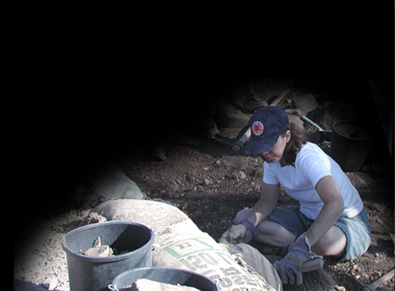|
|
|
 |
 |
|
 |
 |
 |
 |
 |
 |
 |
 |
 |
 |
 |
Archaeological Project
|
Funders
The Binational Scientific Foundation; The Israel Scientific Foundation; Israel Antiquities Authority; Keren Kayemeth LeIsrael – Jewish National Fund; the Israel Government Tourist Corporation.
The unique of the site
It is very rare to find a medieval castle which existed for less then a year. It is even rarer to find such a castle which was destroyed by war and deserted immediately afterwards. The remains of the siege, can be very accurately dated the date and even sometime to the hour. In addition, the remains of articulated horses and even the remains of Frankish warrior’s skeletons were found on the site with many hundreds of arrow-heads, and other types of weapons and working tools which were discovered on the site.
Medieval construction methods
The fact that the castle was still under construction when destroyed enables us to reproduce the whole procedure of construction of a major medieval site by archaeological means. 
Weapon Injuries on the Crusader Garrison Skeletons
The skeletal remains of five of the garrison who were killed during the siege and the execution which followed have been studied, providing a vivid portrait of what it must have been like in the last hours as the castle surrendered. Multiple sword and arrow wounds were noted, and arrowheads were still in situ at the time of their deaths. All the
soldiers appear to have been stripped of their armour and then dumped together with corpses of horses that died in the battle. All of the skeletal remains were recovered in a Frankish context and their estimated ages ranged between 20 and 40 years. These individuals were found in a layer of ash under the remains of the only building that had been completed by the time the castle was destroyed. None were formally buried. The bodies lay in an apparently random orientation and with remaining limbs randomly positioned.
Equid remains
Excavations at the Frankish castle at Vadum Iacob (Ateret, Israel) uncovered evidence of a well-documented massacre, which took place on 30 August 1179 AD, as the result of a Muslim attack. The archaeozoological remains include ten articulated equid skeletons, which were identified as three horses (Equus caballus), six mules (♀E. caballus Χ ♂E. asinus) and a donkey (Equus asinus). All the equid skeletal remains were found under the debris of a 22m Χ 9.1m groin vault which was intentionally destroyed by the Muslims after the battle and was not disturbed by later human activity or scavengers. Most of the equids were probably killed during the battle by arrowheads which were found scattered around them. The state of the equid skeletons suggests that after their death they were dumped in a pile with the human bodies and were buried under the debris of an intentionally destroyed vaulted building. The archaeozoological specimens also support the archaeological evidence, which indicate that the castle was still under constructions at the time of the battle unlike the chronicles description, since most of the equids remains were belong to adult mules with pathological marks indicate hard work for long time, which may indicate the use of mule in the construction of the castle.
Other animal remains
In addition to the equid remains which were found at Vadum Iacob their were articulated skeletons of pigs (sus scrupa), which were killed during the battle and piled together whith the equids. Other isolated burnt bones of domestic animals: sheep (Ovis aries), goat (Capra hircus), cattle (Bos taurus), pig (Sus scrofa) and chicken (Gallus gallus), were found too, probably representing the food that was consumed during the construction of the castle.
An adult articulated pig was found in the north part of the castle in a small room with numerous arrowheads imbedded between his bones and scattered around him. This animal considered unclean animal by the Muslims religion. Therefore, this evidence together with the articulated young pig may indicate that a religious motivation was a factor in the battle, and the pigs, which were a regular meal to the Crusades, were massacred by the Muslims, which want to eradicate all the Crusade characteristics.
Weapons and Tools
Immediately after the battle had ended, the Muslim forces combed the site, weapons and armour were collected reused or sold in the city markets. This was indeed the norm and it is not surprising that our archaeological team has not found that many items related to the battle. There were, however a number of impressive finds, left behind, amongst them a knobbed mace-head, a dagger and a couple of thousands of arrowheads. 
Since the fortress was never completed, and resembles a large building site, a fairly large number of working tools were found scattered around- hoes, spades, picks, and like all made out of iron but well preserved. 
|
 |
|
|
|
 |
 |
 |
 |
 |
 |
 |
 |
 |
 |
 |
 |
 |
|
|

